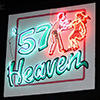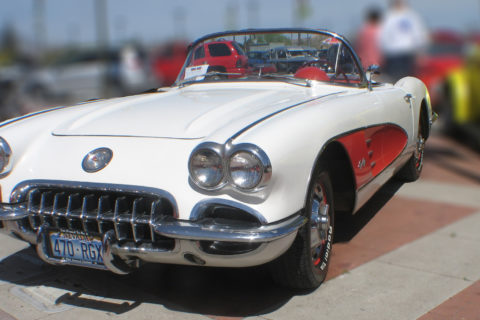Enthusiasts describe Corvettes as the coolest, most awesome, hottest cars that ever rolled off an assembly line. All that glowing praise is because, well, they are!
When they came home after World War II, American GI’s brought the European cars they’d fallen in love with – Alfa Romeos, Jaguars, MGs, and such. General Motors (GM) designer Harley Earl wanted to build an American-made car that captured the thrill of the road the way these two-seater European sports cars did. Project Opel, the code name for the development phase of the Corvette, was born and the world’s first Corvette was showcased at GM’s 1953 Motorama car show.
Named after a small, highly maneuverable fighting ship, Corvettes sported fiberglass bodies that decreased the weight and thus boosted the speed of the car but also because steel was in short supply due to rationing as an aftermath of the war. In spite of the promise its name implied, the first series, C1, Corvettes didn’t quite live up to expectations. Zora Arkus-Duntov (nicknamed the Father of the Corvette) stepped in, revamped the car’s performance capabilities, and history was made.
- Chevrolet’s online showroom makes dreams come true.
- Harley Earl operated on the belief that poor, or improperly timed, styling would be financially disastrous.
- Zora Arkus-Duntov said 150-mph Corvette’s no dog anymore.
- The National Corvette Museum in Bowling Green, Kentucky, is said to be the “Mecca” for Corvette enthusiasts.
- The National Automobile Museum in Reno, Nevada, houses John Wayne’s 1953 Corvette 2934 Convertible.
1953 to 1962 (C1 Series)
The 300 Corvettes made in 1953 were built and assembled by hand, making them the most highly prized Corvettes ever made. Until the V8 engine was introduced in 1955, Blue Flame straight-6 engines were standard. Fuel injection was added in 1957, producing about 290 horsepower (hp), or about one hp per cubic inch (an automotive first), as its advertising campaign boasted. Other C1 upgrades and innovations included the hydraulic convertible top, electric windows, heavy duty brake and suspension systems, and four-speed manual transmission.
On the outside, the 1958 model was the flashiest ever made, heavy with chrome, quad headlights, hood louvers, twin trunk spars, and bumper-exit exhaust. Later models gained speed by dropping some of the chrome. The 1961 model featured a boat-tail rear and four round tail lights. The engine was enlarged in 1962 to 327 cubic inches (cu in) (5.4L), producing 360 hp at full performance.

